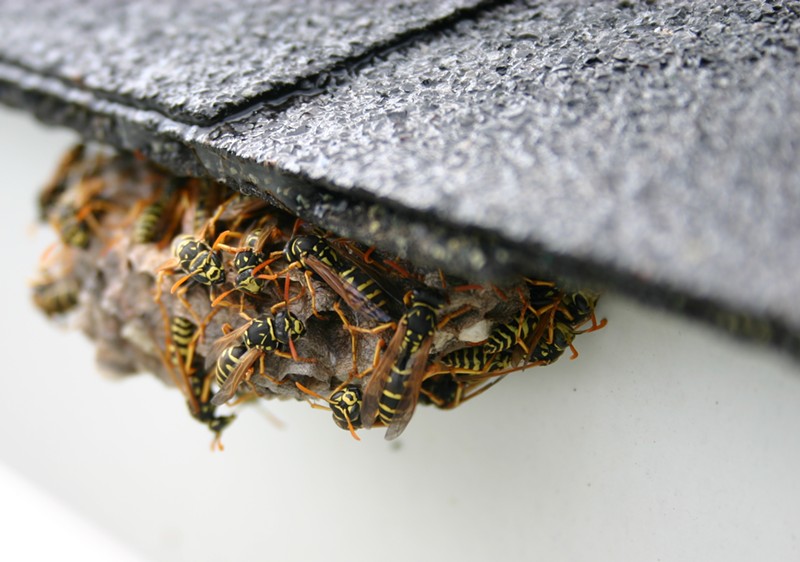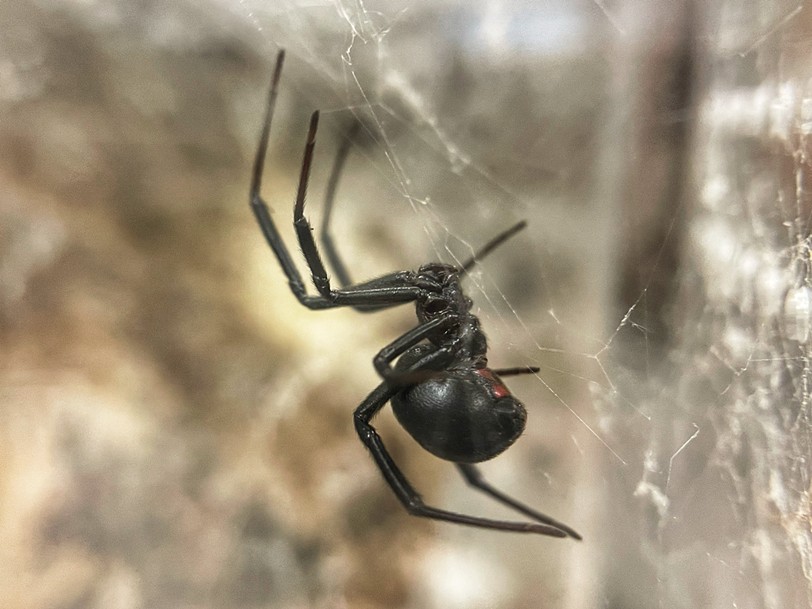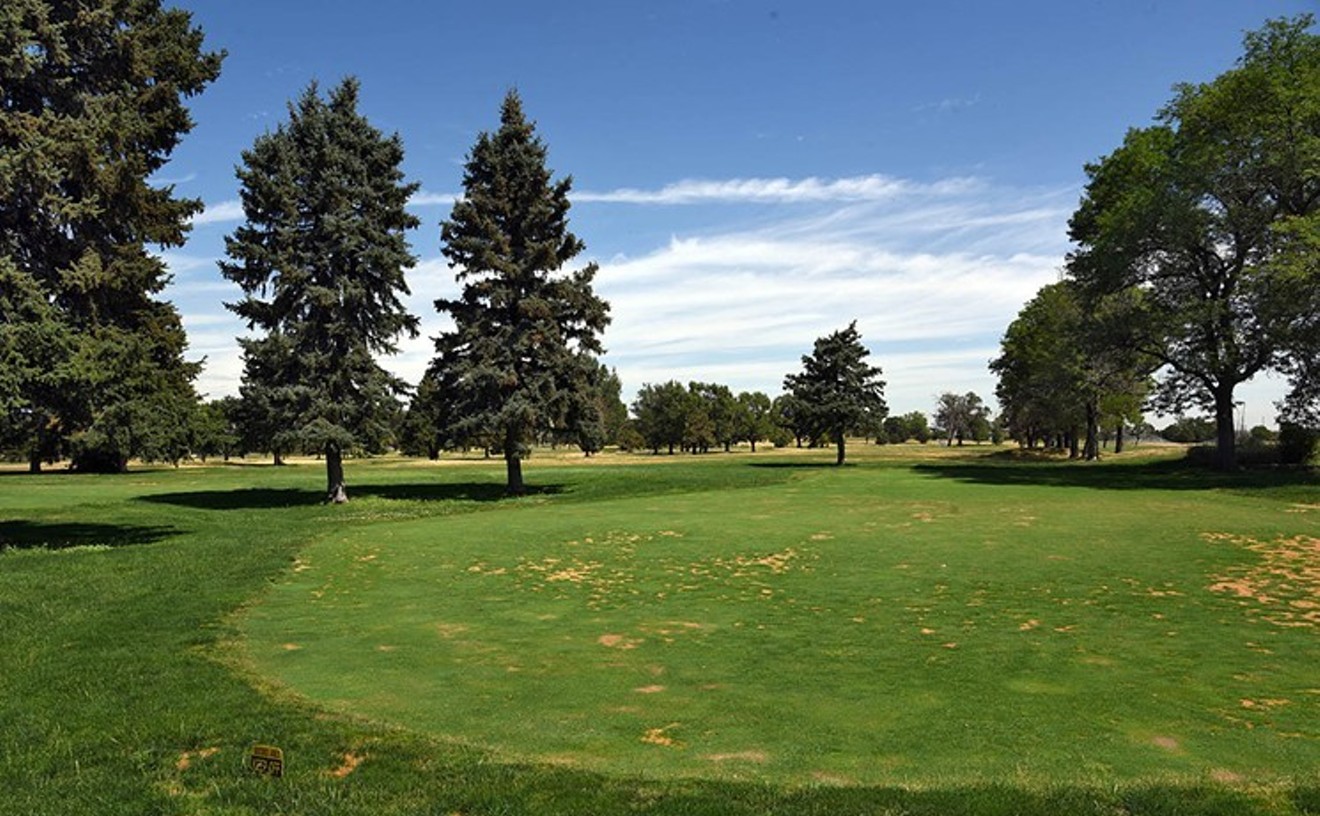According to Karim Gharbi, a horticulture agent for Denver County with the Colorado State University Extension, there aren’t official studies documenting wasp or spider population trends in Denver, but he believes there are likely more of these bugs around.
“It's kind of like in Pulp Fiction, where Samuel Jackson says the absence of evidence is not the evidence of absence,” Gharbi says. “Regardless of whether there's an increase or decrease in the populations, I would say it is accurate to say that we are seeing more of these species in urban areas.”
Francisco Garcia Bulle Bueno, research and conservation manager at Westminster's Butterfly Pavillion, says he’s observed high numbers of wasps trying to steal honey bee larvae and honey this year while caring for honey bees. It’s common to see more wasps at the beginning of fall as they prepare for winter, he says.
On iNaturalist, one of the biggest citizen science apps in the country, users have documented more wasp sightings this year than in the five previous years, though Gharbi says that could be because the app has gained more users over time.
Even though there’s no concrete count of wasps and spiders around Denver, these experts say there are reasons that people could be noticing them more: Both wasps and black widows are human-adapted, and people have created ideal habitats like roof underhangs for paper wasp nests and dry, undisturbed places like crawl spaces for black widows.
Plus, human food waste left outdoors or in trash bins creates buffets for wasps, which are scavengers. Climate change has led to higher concentrations of wasps heading into cities, as well, according to Gharbi.
Why More Wasps Are in Denver
As winters get milder and warmer, more wasp queens survive hibernation and establish colonies in the spring. Additionally, hotter summers and falls dry out natural areas, eliminating hunting grounds for wasps, which eat other bugs. “They can't find the insects that they normally eat as easily in the natural areas, so what do they do? They turn to our urban areas,” Gharbi says. “It's kind of like a haven — not just for the insects, but for the wasps. They divert their attention away from the burned-up, crispy grasslands to our over-irrigated lawns that are often rife with the insects that they eat.”
Both Gharbi and Garcia Bulle Bueno say the types of wasps we're likely to notice are yellow jackets and paper wasps. Hundreds of types of wasps tend to stick to gardens, whereas yellowjackets and paper wasps often make their homes on or near man-made items.
Paper wasps like overhangs and yellow jackets nest in the ground. Gharbi says the most common species of paper wasp in Colorado is the invasive European paper wasp, which is more aggressive than those native to America and eats native butterflies and caterpillars.
However, as Garcia Bulle Bueno points out, wasps usually do not bother humans and serve important purposes as pollinators and pest controllers.
“They are playing these two really, really important roles for nature,” he explains. “Wasps can sting, but it's very important to note that as long as people don't go really close to their nests, they should be totally fine.”
If you accidentally kill a wasp, it's a good idea to avoid the area for a few hours: as the insects are dying, they release a pheromone alerting the rest of their colony that they are being attacked.
Wasps could be more aggressive as they are preparing for winter and need to gather as many resources as possible to get their queens through the cold season. On the bright side, that means wasps will soon disappear for the winter, Garcia Bulle Bueno points out.
To prevent wasps from nesting near homes, people can purchase decoy nests for paper wasps or spray peppermint spray around eaves and other locations where wasps might want to make a colony. If wasps nesting in a home are causing problems, call an expert to deal with them.
Black Widows Co-Existing With Humans
Tarantulas get the most attention in Colorado because of their famous fall mating migration taking place this month, but black widows have also been spotted around metro Denver. Like cockroaches, ants and rats, black widows enjoy human habitats. They thrive in dry, undisturbed areas like piles of bricks or brush, overturned garden pots, window wells and crawl spaces.
Unlike wasps, which are territorial, black widows don’t mind living near each other, so Gharbi says people may feel like there are a lot of spiders around. Garcia Bulle Bueno says that although black widows are seen as evil schemers, that’s not true. They’re more like teenagers: They just want to sit in their rooms (webs) and be left alone.
“Black widows are super shy,” he adds. “One of our colleagues calls them the couch potatoes. They always want to be in a place that nobody will mess with them, so they're going to be hiding as much as they can.”
As is the case with most spiders, black widows help control annoying bugs like flies and mosquitoes.
By regularly cleaning homes, including random corners or piles of construction supplies, humans can stave off black widows. Gharbi recommends increasing foot traffic and lighting in places like window wells and crawl spaces, too, but both experts say black widows are not nearly as horrifying as their inflated reputation.
“No one has died of a black widow bite since 1983. It's very rare,” Gharbi says. “They're very timid when they are in their web. They're not going to mess with you unless you're poking the web — or maybe in the fall, this time of year, if they have egg sacs and you disturb their web, they may be a bit more aggressive.”
Even when people do get bit by black widows, they usually just need to apply ice and elevate the bite, and no hospital visit is necessary. Gharbi says only those who are immunocompromised, very old or very young face serious threats from black widow bites. Pets are at risk, too.
The Butterfly Pavillion currently has a Spiders Around the World exhibit that lasts until October 31, designed to demystify the misunderstood arachnids as spooky season approaches.
“It’s an awesome way to just face your fears, and hopefully learn to love them,” Garcia Bulle Bueno says. “We're showcasing all these types of spiders. Like, jumping spiders are so cute; they're one of the best gateways for people to start liking spiders, because they're just unbelievably cute.”













